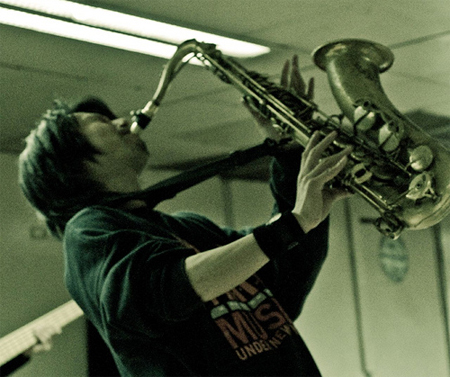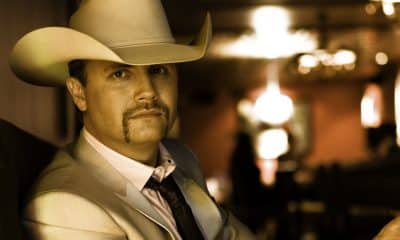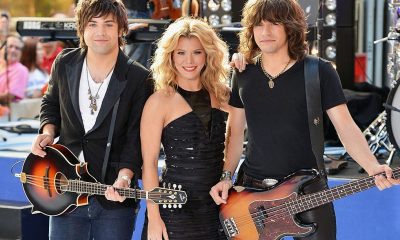Columns
The Noise Beneath The Apple: All That Yaz
New York City is home to the largest public transit system in the world. Over 700 miles of track lace beneath Manhattan, and more than 4.5 million people ride her rails daily. It is a city in which over 75% of households do not own cars, thus making it one of the most energy efficient cities in the world.
 On this New York summer evening the mercury reads 98 degrees, with a humidity level to match. In the subway, the temperature hovers above that. The sounds of a saxophone rival the loudspeaker overhead. And the smell of Halal food wafts into the air, mingling with sweat and beer. NYPD, in finely pressed blue uniforms and shiny black shoes, walk the terminal and the walls are adorned with ads announcing the latest Hollywood releases. At the far end is the yellow and black MUNY banner of Yaz, a Jazz musician.
On this New York summer evening the mercury reads 98 degrees, with a humidity level to match. In the subway, the temperature hovers above that. The sounds of a saxophone rival the loudspeaker overhead. And the smell of Halal food wafts into the air, mingling with sweat and beer. NYPD, in finely pressed blue uniforms and shiny black shoes, walk the terminal and the walls are adorned with ads announcing the latest Hollywood releases. At the far end is the yellow and black MUNY banner of Yaz, a Jazz musician.
I’ll be the first to admit that I don’t get Jazz. It is a language that goes everywhere and nowhere at the same time, with no discernable beginning or end. It stands alone in a crowd, as something extremely big and simultaneously intimate. Even Wikipedia surrenders, saying that ‘all such attempts at defining jazz are unsatisfactory.’
But on my sojourns into the subway, I have come to decide this, at the very least: Jazz is a style of music that captures the spirit of New York. It is uniquely individual improvisation…and that’s the only way to survive in the Big Apple. To uniquely improvise, every day.
Having followed Yaz as he plays underground, I notice that the melodies and the harmonies are impacted by his mood, by his interactions with fellow musicians and by the members of the audience. And like New York herself—where little is mundane or repetitive—Yaz never plays a composition the same way twice.
Meet Yasuyuki Takagi. Today, he is one of the most popular New York subway performers, but his beginnings start far from the Big Apple, across mountains, oceans and languages in Osaka, the commercial capital of Japan Osaka.
“Let me explain first,” he begins. “My English skills aren’t good enough to talk in detail…”
As I listen to Yaz’s story, I disagree. I’m caught in the details of his irrepressible smile, his high spirited laugh, his genuine joy at blowing his horn against the sweat soaked backdrop of sweltering people and trains; of living his dreams in the New York underground.
“My father is Jazz man,” he begins. “I was listening to my father’s records at a young age, but I didn’t know what I was listening to, but what I was listening to was very special.”
What he was listening to as a boy were the ‘very special’ American Jazz musicians: Bob James, Dave Grusin, The Crusaders, Thelonius Monk, Kurt Elling, Earth, Wind & Fire, Grover Washington Jr…
Yaz went to the University of Japan, where he studied Special Education, which was followed by a five year career as a social worker. While at the University, he picked up a saxophone and began playing, “just for fun.” But that ‘just for fun’ exposed itself as ‘just raw talent.’ He discovered the smooth styling’s of David Sanborn. As his fingers danced over the keys his desire to play was all consuming and he made a decision to pursue music as a fulltime career.
It was a decision easier made in the mind of a twenty-something year old man, than carried out in the reality of the world.
“My parents didn’t want me to be a musician,” he recalls. “They did not want me to go to New York. They used to tell me, you don’t have any talent with the music.”
Jazz legend Charlie Parker once said, “Music is your own experience, your thoughts, your wisdom. If you don’t live it, it won’t come out of your horn.”
Living it, is exactly what Yaz did. In 1992, speaking little English and having few resources and even fewer friends, he came to the Big Apple, to pursue his dreams of being a professional musician.
“New York is a Jazz city; John Coltrane, Miles Davis, Johnny Parker…New York is a very special city,” he says, “very, very special, and very special for those who love Jazz. So, I was expecting that something very special would happen here.”
New York City is flanked by the Hudson River on the west and the East River to the east. The city itself is a collection of wildly diverse neighborhoods including Harlem, China Town, Little Italy, Greenwich Village, Fifth Avenue and once heavily Japanese populated areas in Brooklyn. It was here that Yaz arrived and began working in a Japanese Restaurant as a dishwasher, later at a Japanese Tour Company and a Japanese bookstore. He was “playing saxophone by myself in that basement of an apartment from night ’till morning and working. I am always in Japanese community,” he says. “So no chance to learn English, but fortunately, I started playing with an American musician about ten years ago and started to learn English.”
And then, the morning of September 11th, 2001, changed New York City, forever.
“No tourists come to New York anymore,” remembers Yaz. “No tourists come ever. So, I was fired from Japanese tour company. I have no skills for any job, so I made a decision to play saxophone in the subway. After 911, there were many police in the subway station. That makes subway safe. But, right after, I was very scared. I couldn’t take subway. I was thinking; first time airplane, next time subway. I couldn’t take subway for a month.”
Horn in hand, Yaz would walk to the subway stations, open his case, and pull out the glistening gold instrument and play. Along the grief ridden streets, the tear encrusted alleyways, New Yorkers stopped and they listened and they took solace in the notes and the silences emanating from this Japanese man, as he played to the heart of New York City, as he played the music of New York City; as he played Jazz.
In the summer of 2002, Yaz auditioned for MUNY, passed, and became an official member playing in the underground.
Since then, his career has had many peaks. He has performed in venues throughout the city and the country, (as far away as Tucson, Arizona) and beyond.
“When I was playing in New York subway, a Korean person spoke to me and they were planning to bring subway musician to Korea and they pick my band. They brought us from New York to Korea. The TV came and magazine came. It was exciting experience. But, it was not New York.”
He has been a finalist in Subway Idol (a spin on American Idol), has performed as part of Lincoln Center’s ‘Out of Doors’ Festival, has appeared on television and New York City’s smooth jazz radio station WQCD—better known to New Yorkers as “CD 101.9.”
When asked what his dreams are today, Yaz sits silently for a moment. “Several years ago, my dream was having my own band, playing my original songs. I wanted to release my own CD. I did it already. I am very happy to be recognized as one of the musicians of New York. I would like to bring my band to Japan and I’d like to tour with my band in the United States. If I can do that, I will be very happy. But New York has made me very happy already, because it has made my first dreams come true. Now, I can have more dreams and think about what is the next stage.”
With three CD’ to his credit and his upcoming release, You Can’t Say it in Public, available in September 2010, Yaz shows no sign of slowing down. Today, the Yaz Band consists of several players, including longtime friend and mentor Eric Smith, whose roots in the classic R&B sound of Motown bring an unexpected hip wiggle and funk to the groove.
When asked to define Jazz, Yaz simply says, “I never knew and still don’t know the definition of Jazz. I just know what it feels like.”
- Lists13 years ago
Top 10 Country Music Albums of 2010

 Interviews5 years ago
Interviews5 years agoJohn Rich – The Interview

 Song Reviews16 years ago
Song Reviews16 years agoTaylor Swift – “Love Story”

 Interviews5 years ago
Interviews5 years agoHoneyhoney on Hiatus: Revisit our 2008 Interview with Suzanne Santo

 Album Reviews14 years ago
Album Reviews14 years agoAlbum Review: Miley Cyrus – Can’t Be Tamed

 Song Reviews6 years ago
Song Reviews6 years agoThe Band Perry – “Hip To My Heart”

 Columns5 years ago
Columns5 years agoThe Link Between Folk Music’s Past and Present

 Columns5 years ago
Columns5 years agoIs Marketing Killing Rock and Roll?

